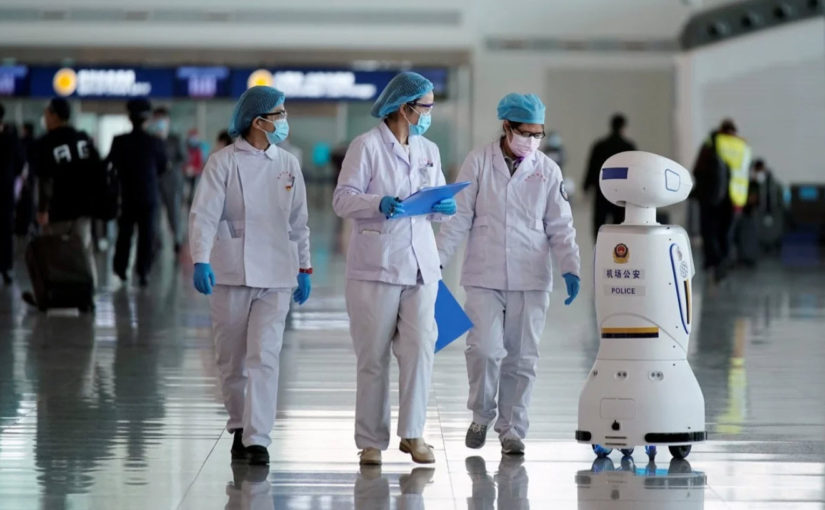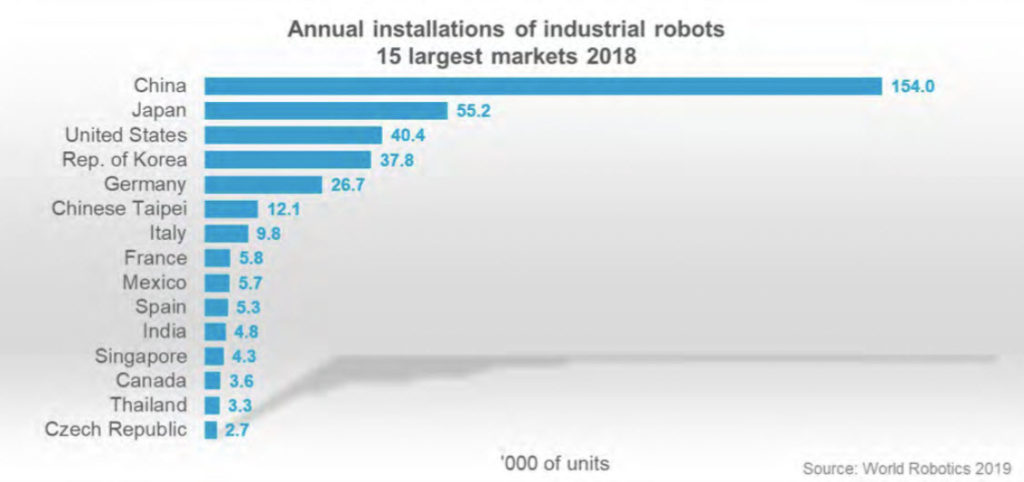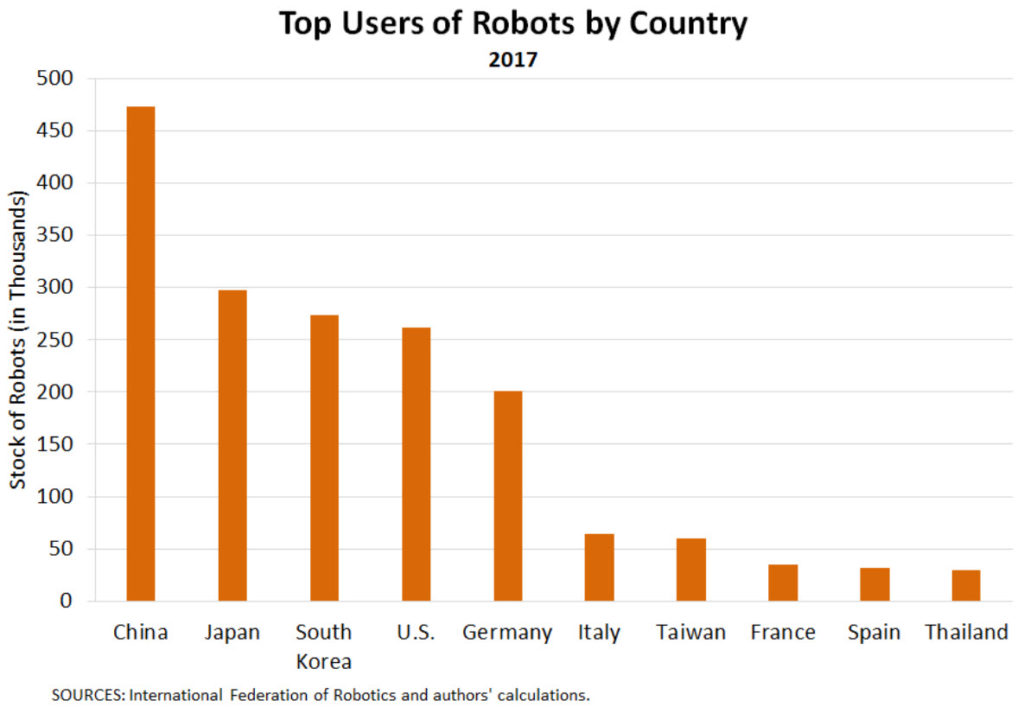Unknown in the rest of the world, but commonplace in China are these little robots that are seemingly everywhere. They scan you when you go into public buildings, and they help deliver food to you. They ask you if you need help or directions, and they help sweep the sidewalks and perform basic maintenance tasks. And here I am in a second tier city. Not even a first tier city. It’s all really cool.
According to the International Federation of Robotics (IFR), China has had the most industrial robots in operation globally since 2016. By 2020, China is expected to produce 150,000 industrial robot units and have 950,300 industrial robots in operation.
A few years back was when I first noticed them. I think that my first exposure to the public robots was around 2013. There I saw my first one patrolling the immigration walkways of Shenzhen.
Then a few years ago, I bought my infant her first baby robot. This is a cute little egg about the size of barbie doll that sang and talked. It would pulse in this kind of pale yellowish light and it’s eyes would twinkle blue and green. She loved her little baby robot.
Since then I really haven’t paid the robot developments too closely. Most of my concern were in the industrial aspects of AI and robotics. Not so much regarding the commercial and public aspects.
Then 2020 Coronavirus hit.
Ouch! Then suddenly the skies were filled with thermal imaging drones, and police robots making sure that people are kept off the streets and maintaining good citizenship behaviors. The first were nothing more than a nice shiny white cylinder with a pair of eyes, a television screen and a nice voice.
Now they are getting more sophisticated. they all seem to have either a female voice or a cute little girls voice. It’s actually quite charming.
Here’s some videos. Check out the little girly voice on this delivery robot…
Factory Robots
And they have been in factories for decades now.
China made robotics a focal point of its recent “Made in China 2025” plan, and has set national goals of producing 100,000 industrial robots a year and having 150 robots in operation for every 10,000 employees by 2020, a figure known as robot density. -Robots are key in China's strategy to surpass rivals
Service Robots
A service robot operates semi or fully autonomously to provide services for human health or the maintenance of equipment, excluding industrial operations.
Healthcare/medical devices, finance, warehousing/logistics, and customer service/catering are the hottest industries for service robots. Service robots have also increasingly been appearing in households as home-cleaning robots, accompanying robots, entertainment robots, and education robots.
In 2017, the market for service robots was worth an estimated US$1.32 billion in China. But with a rapidly aging population, the continuous demand for healthcare and education, and the rapid development of parking robots and supermarket robots, the market size of service robots in China is expected to exceed US$2.9 billion by 2020.
Here’s an example of a video performing warehouse activities…
Some fun pictures
The main applications of industrial robots in China are in the following sectors: automobile manufacturing, electrical and electronics, rubber plastics, metallurgy, food, chemical engineering, and medicine and cosmetics. -The Robotics Industry in China - China Briefing News
Here’s a police robot that connects to your cell phone. It enables you to chat with it via your cell phone, exchange pictures, get directions and offers the entire host of government APPs that are available within China.

Robots come in many sizes and shapes. the smaller ones are just as capable as the larger ones and can provide translation services, guide, help and directions. This one is Wechat enabled and enables you to connect to it directly for information access and data.

Hospital Robots
Here’s a couple of police robots that assist in hospitals, airports, rail stations and other public venues. Like all police robots they provide ready access to a Police hot line, and immediate help in any distress situation.

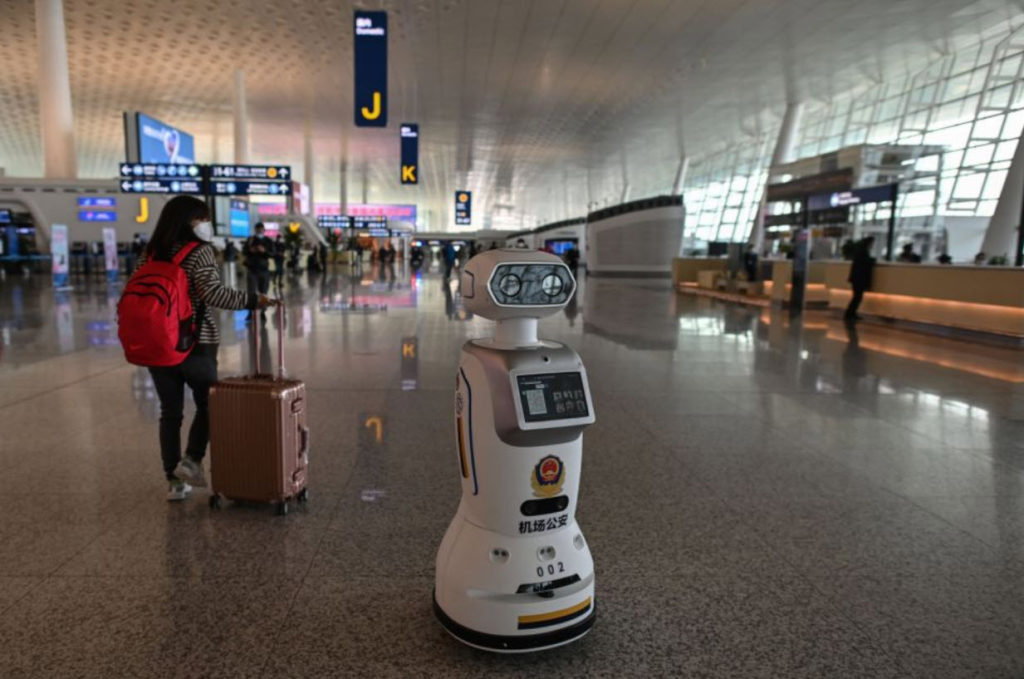
Specialized service robots
Specialized service robots in China are generally considered those used for military applications, extreme operations, and emergency rescue.
Specialized service robots in China are increasingly being used in response to earthquakes, floods, extreme weather, fire, security, and other public safety incidents. With Chinese enterprises’ increasing safety awareness, specialized service robots will be used in dangerous environments to perform a wide variety of tasks.
In 2017, China’s market for specialized service robots was worth an estimated US$740 million. By 2020, it is expected to reach US$1.24 billion.
Here’s a robust all-terrain police robot for crowd control and assistance to people. It monitors the environment and responds to issues just like a normal policeman would.
In addition to regional clusters, China has more than 40 robotics-focused industrial parks throughout the country. Robotics-focused industrial parks benefit from government resources and incentives to promote the industry. At the 2017 World Robot Conference in Beijing, CIE released the Report on the Development of China’s Robot Industry (2017). -The Robotics Industry in China - China Briefing News

AI advancements in Manufacturing
China has been the world’s largest industrial robot market for four consecutive years. In 2016, China had a total sales volume of almost 90,000 units – a 27 percent increase compared to 2015 and representing 30 percent of the global market.
The Chinese government has ambitious plans for the country’s robotics industry. MIC 2025 starts by listing the robotics industry, along with artificial intelligence and automation, as one of the priority sectors for high-end development to push forward the transformation and upgrading of the manufacturing industry. This push sees the government aiming to raise the global market share of Chinese-made robots from 31 percent in 2016 to over 50 percent by 2020. Further, in 2016, the government launched the Robotics Industry Development Plan (2016-2020) to promote robot applications to a wider range of fields and to attract foreign investment, aiming to make 100,000 industrial robots produced by domestic technology annually by 2020. To attain these goals, the government supports companies that implement robotics-enabled automation in key industries, including automobile manufacturing, electronics, household electrical appliances, and logistics. The government has several programs and incentives to encourage R&D development and innovation, such as offering robot manufacturers and automation businesses subsidies, low-interest loans, tax relief, and land rental incentives. Furthermore, the Ministry of Industry and Information Technology recently announced at a news conference in anticipation of the 2018 World Robot Conference that China has “approved a plan to build a national robotics innovation center, which will focus on tackling common bottlenecks such as human-machine interaction technologies and compliant control.” During the 2017 Boao Forum, Chinese officials also restated the importance of domestic and foreign companies to be “treated equally in terms of qualification licenses, government procurement, and enjoying preferential policies of MIC 2025.” Nevertheless, many foreign governments and tech companies fear that MIC 2025 gives Chinese companies an unfair advantage. -China Briefing
Police Robots
Here’s a police robot that answers your queries. Can provide directions, answer questions, respond to distress and show you where to go, including taking you to the police office or exit if you need help.
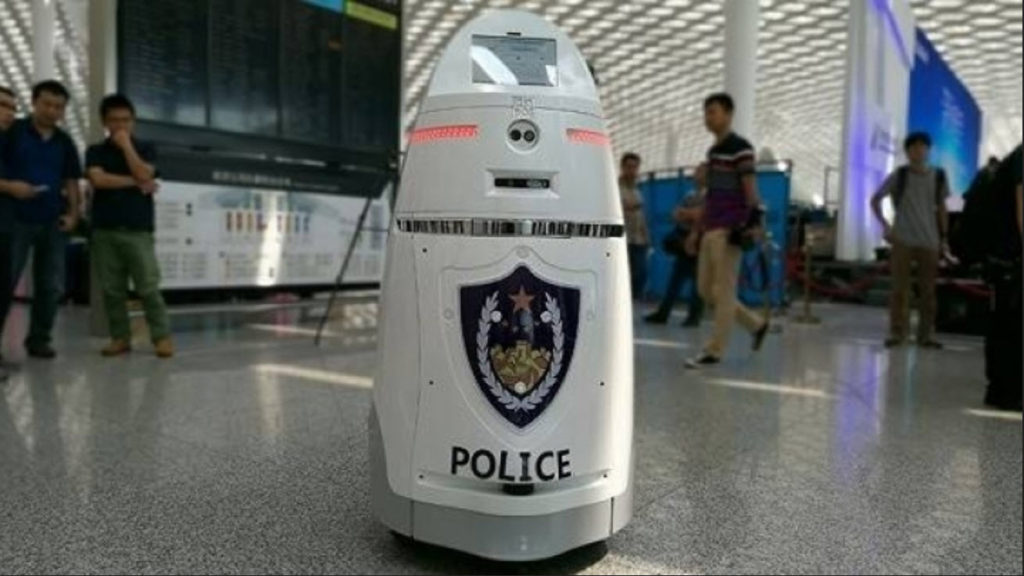
To date, the government’s efforts to develop the industry appear largely successful: China is the fastest growing robot market in the world. Analysts attribute China’s rising robotics industry to its scale, growth momentum, and capital. As of March 2017, more than 800 companies in China were directly involved in robot manufacturing, and by the end of 2017, there were over 6,500 companies relating to robotics. Major Chinese robotics players include SIASUN and DJI Innovations. Development primarily focuses on servo control, motor, and reducer, human-machine interaction techniques, robot vision and intelligent speech, and underwater robots, among other technologies. The rapid growth in China’s robotics industry is not limited to domestic companies. Foreign companies such as Nachi-Fujikoshi and FANUC have franchised with KUKA, Reis Robotics, Staubli, and ABB to establish production facilities in China – not only sales or integrated offices. The Taiwanese electronics giant Foxconn is another major robotics player in China. Government incentives have also allowed Chinese companies to acquire Western robotics technology companies. For example, in 2016, Midea Group acquired KUKA, one of the world’s largest robot manufacturers, to advance its home appliance production. With strong government interest in the robotics industry, a large and growing number of Chinese companies, and foreign companies that often hold the most advanced technology, there are a number of different actors involved in the industry. According to Martin Kefer, founder of Motus Operandi, a robotics software company based in Shanghai, foreign robotics companies entering the Chinese market must be prepared to deal with a large number of stakeholders. Kefer noted that many of the manufacturers that are adopting robots operate in Sino-foreign joint ventures, such as in the auto industry, where foreign ownership is still capped. “Getting the foot in the door with JV manufacturers can be difficult,” Kefer noted. “Every car company partnering with a local factory in a mandatory JV agreement can make negotiations among stakeholders more complicated.” Furthermore, investors must be prepared for the government to be another key stakeholder in the industry. “[The] government is an actor on all levels,” Kefer said. -China Briefing
Software for robots
Besides the current two traditional robotics businesses in China – hardware and system integration – foreign companies such as Motus Operandi are investing in a third solution: software designed for robots.
For example, Motus Operandi provides software for installation in robots that finds the most energy efficient way for a robot to carry out a given task, which can save companies millions annually.
“We focus on smart motion for robotics arms in manufacturing industries. We bring something new, which is reducing the energy consumption and improving the speed of the robot system, based on the data from the robot system.” - Martin Kefer, founder of Motus Operandi, a robotics software company based in Shanghai
Robotics companies such as Motus Operandi benefit from the Chinese government’s support for the industry.
“Electricity is subsidized in China, which means the government pays the final bill,”
Yet, Kefer cautioned against over-reliance on subsidies and incentives.
“Avoid relying on government for growth,” “Support for startups in China are mostly for Chinese startups – securing government funding is harder for foreign startups.”
Motus Operandi’s experience is demonstrative of opportunities in China’s robotics industry. Aided by government support, producers of robots and related software and services are finding substantial room for growth.
However, these same government initiatives can also create competition and hurdles for foreign players in the long run. Such policies make the robotics industry an alluring but challenging area for foreign investment.
Everyday Robots
Here’s a police robot. It’s going around and helping people and monitoring crowd control and providing situational awareness.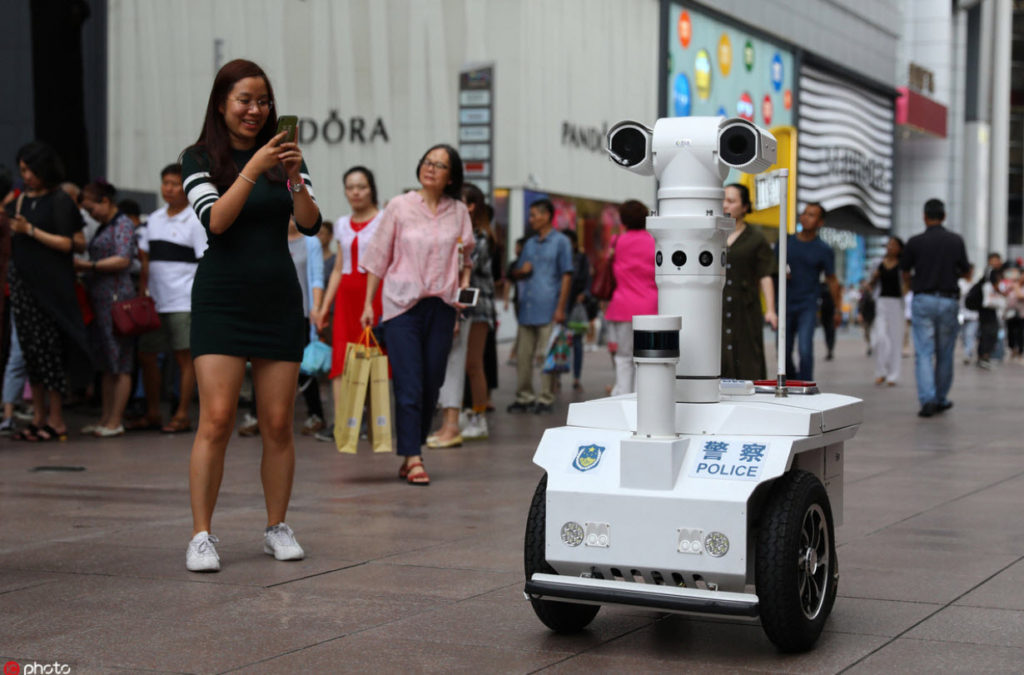
According to the Chinese Institute of Electronics (CIE), east China’s Yangtze River Delta region has the most solid foundation for robotics development. The Yangtze River Delta region has formed an agglomeration effect in Shanghai, Kunshan, Changzhou, Xuzhou, and Nanjing. Many global robotics giants establish headquarters or offices in the Yangtze River Delta, especially in Shanghai, where Kefer noted that the startup environment is very supportive. The robotics industry in the Pearl River Delta and the Beijing-Tianjin-Hebei (Jing-Jin-Ji) regions are also gradually growing. The number of robotics-related companies in the Pearl River Delta region is over 700, second only to the Yangtze River Delta region, with a total output value of RMB 75 billion (US$11.80 billion). However, the industry’s overall innovative capabilities in the northeastern region – China’s rust belt – have been limited in recent years. In China’s central and western regions, the foundation of robot production is relatively weak. However, these generally fast-growing regions still show potential for development. In addition to regional clusters, China has more than 40 robotics-focused industrial parks throughout the country. Robotics-focused industrial parks benefit from government resources and incentives to promote the industry. -China Briefing
Human appearing Robots
The world of robots is very interesting. From what I have shown so are, which are the norm inside of China, to the stuff that you don’t see often…
…like military robots.
…like sex robots.
I would say that about 99% of the sex robots are manufactured within China. It's a big industry and many Americans and people from the Middle East don't hesitate to pay a couple of thousand US dollars for a model of their choice.
And one of the most interesting are the human appearing life-like robots. Such as this…

Everyday Robots
These are some pictures of scenes that are not uncommon within China…
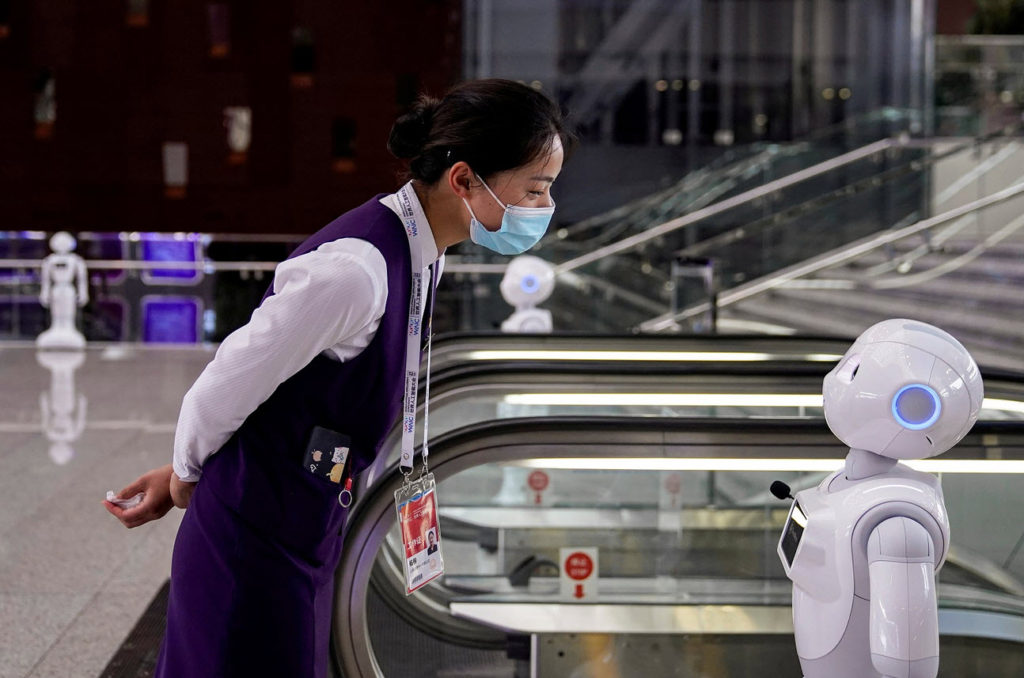
Or, this… which was all over Chinese television back in 2016 during the Chinese New Year. These little guys all danced up a storm, and five thousand or so.

Or, this little guy which is being exported to Japan…

Or, this… even this is becoming more common in the larger cities such as Shenzhen.

Some Chinese military robots
It’s a new world out there.
These are currently fielded. There are many more in development.
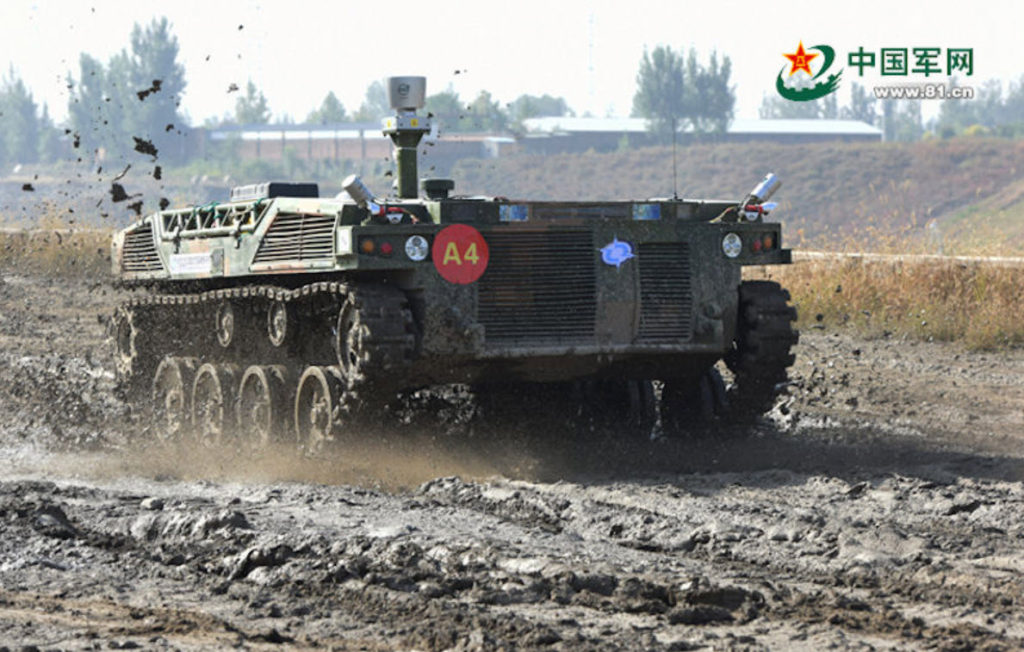
And an interesting write up on Chinese robots in 2016 (five years ago) on Global Security…
Some published science fiction a long time ago imagined battle scenes of robot soldiers in the future. Now this fantasy is becoming a reality due to the rapid development of automation technology in recent years. Military robots replace individual soldiers on the battlefield, which can greatly reduce the casualty rate of military personnel on the battlefield. Robots can return to the battlefield by mechanically repairing and replacing parts. The machine can be mass produced and hardly needs any training. Military robots have stronger battlefield awareness than individual soldiers, and can detect potential dangers on the battlefield through sensors. Compared with individual soldiers, the machine has a stronger load capacity and can be equipped with various heavy weapons, which greatly improves the combat capability. The machine can perform round-the-clock tasks with guaranteed energy. Machines are more adaptable than individual soldiers and can adapt to different battlefield environments. Robots will not have emotions, making military tasks go more smoothly. Unmanned technology has broad application prospects in the military field, will profoundly change the form and style of future warfare, and is the strategic frontier of the development of army equipment. Just as the invention of gunpowder sent modern warfare into the era of hot weapons, some scholars have asserted that artificial intelligence will be the key to detonating future warfare changes. Future wars will be wars on chips. This is not just a contest of human wisdom, but also a confrontation between unmanned systems. Unmanned systems will gradually free human soldiers from heavy physical work and extreme danger and let them focus on making combat decisions and carrying out technical and tactical movements. If such killer robots are put into battle on a large scale, it is very difficult for the human army to win.
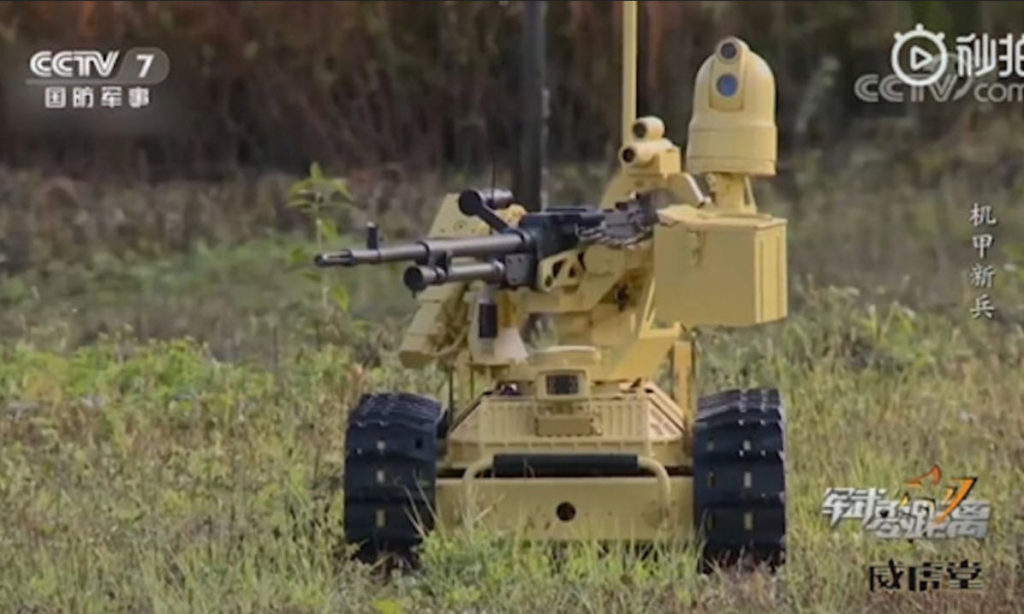
The equipment of unmanned combat vehicles has greatly improved the technical and informatization level of Chinese troops. It gives infantry units stronger battlefield reconnaissance, situational awareness and support firepower. How to achieve perfect tactical coordination with unmanned combat vehicles and give full play to the combat capabilities of unmanned combat vehicles has become a very important issue facing the Chinese military. The Chinese military is developing and testing autonomous / remote control large (over one ton) UGVs (unmanned ground vehicles), which include tanks based on the transformation of the equipment with a lot of artificial intelligence. With the ability to fight autonomously, soldiers can control it remotely. According to military experts of China, the program of robotization of the armed forces in the period from 2014 to 2022 and meeting the needs of the PLA with various types must be accompanied by a 15 percent annual increase in expenditures for these purposes from 570 million. USA in 2013 to 2 billion in 2022. China is trying to catch up and intends to become the first in this field. UGVs can be traced back to the 1990s , when the U.S. Department of Defense developed a four-wheeled, 1.6- ton MDARS (Motion Detection Evaluation and Response System) robotic vehicle for security tasks. This robot is equipped with radar and three-dimensional vision sensors. It can avoid obstacles and recognize any objects encountered. Since 2001, Americans have equipped thousands of robots of this type. Chinese military experts have concluded that the design and creation of fully Autonomous weapons systems is possible only in the long term. The unresolved question is to determine the volume of tasks, operation and the role of Autonomous robotic systems on the battlefield. The People’s Liberation Army Ground Force (PLAGF) recently announced that the Sharp Claw I unmanned ground vehicle (UGV), manufactured by China North Industries Corporation (Norinco), entered service on April 13. This was first reported by China Central Television 7 and was subsequently confirmed by the PLA’s Eastern Theatre Command. Jane’s, the UK-based military news site, was among the first to report the development in the West.

According to Jane’s, Sharp Claw I is a tracked combat and reconnaissance robot weighing 120 kg. (265 lbs.) and measuring 70 cm (28 inches) in length, with an operational range of 1 kilometer (0.6 miles). It can be carried in the cargo bay of the much larger Sharp Claw II UGV, and is designed primarily for use in remote areas unaccessible to human infantry. Sharp Claw II is a 6' x 6' wheeled, unmanned ground vehicle designed to execute combat reconnaissance, patrol, assault and transport duties. Sharp Claw I is capable of detecting and attacking targets “in all weather conditions during the day and at night,” according to Norinco. It is armed with a light machine gun firing 7.62mm rounds. Norinco says the killer robot can operate autonomously.
First displayed as a prototype in air shows in 2014 and 2018, the operational Sharp Claw I has been fitted with numerous upgrades designed to improve its reconnaissance and killing abilities. These include an improved short-range electro-optical payload, machine vision, lighting suite and a refined magazine box and ammunition feed mechanism. The Sharp Claw 1 can walk autonomously, or it can be carried in the cabin of a larger "pointed claw 2" transport unmanned combat vehicle. When marching, they will be transported by the "Jianclaw" 2, and when they reach the combat area, they will march down from the back panel placed behind the cab of the Jianclaw 2 wheeled unmanned combat vehicle for combat. Four years later, at the Zhuhai Air Show in 2018, North Company once again demonstrated an upgraded version of the "Jianclaw" 1 unmanned fighter. The new version has many upgrades, including improved short-range photoelectric loads, machine vision and lighting components, and a newly designed remote weapon station. The weapon station uses ammunition boxes to load ammunition, which can improve the continuous firing ability of unmanned combat vehicles.
Unmanned ground systems (UGVs) are a priority in China’s defense plans, but their deployment appeared limited. UGVs encompass numerous vehicles that operate on land with a human operator or autonomously. They can execute military missions including combat, ordnance disposal, and transport. Numerous Chinese civilian and defense companies, universities, and research institutes are developing UGVs and other unmanned ground systems. R&D on intelligent guidance for unmanned ground platforms is reported to receive support from China’s 973 and 863 programs for high-technology development, as well as the Twelfth FYP of the General Armament Department (GAD).
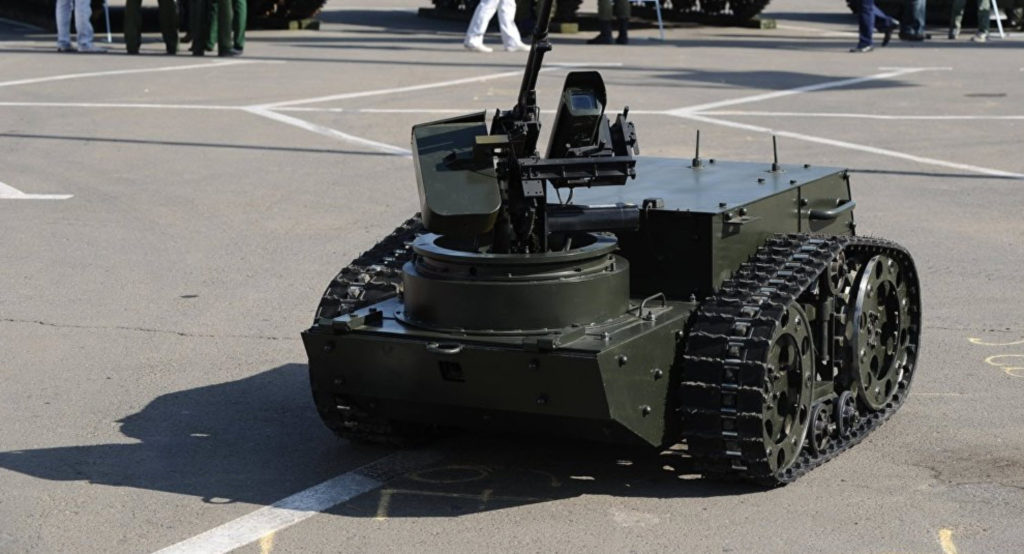
To spur these systems’ development, in 2014 the former GAD hosted the first robot competition, which featured 21 vehicles from over ten research institutes. Teams from NUDT came in first and second place, a team from BIT came in third place, and a team from the PLA’s Military Transportation University came in fourth place.
In September 2016 the Chinese military hosted the “2016 Leap Over Treacherous Paths” contest. The contest hosted five competitions for unmanned ground systems to simulate battle operations in different terrains and missions. The competition areas are rough terrain battlefield reconnaissance, rough terrain battlefield marching in formation, urban battlefield reconnaissance and search, transport in mountainous regions by bionic unmanned platforms, and transport in mountainous regions by non-bionic unmanned platforms.
The “Overcoming Dangers 2016” Ground Unmanned System Challenge took the form of socialized public release. Since its release on June 7, a total of 56 units, 116 platforms (times), and 557 people signed up to participate in the competition. Research institutes, state-owned enterprises, private enterprises and many other fields of research forces signed up to participate.

On the morning of September 6, the preliminary round of the “Overcoming Dangers 2016” Ground Unmanned System Challenge was grandly held in Tahe, Heilongjiang. After review by the expert group, a total of 40 leading units, 44 cooperating units, 73 teams, and 99 vehicles. Equipment participated in the preliminary round of this challenge. Lasted for 8 days, the preliminary round was successfully concluded on September 13, and 22 of the 73 participating teams advanced to the final. The finals focused on strengthening the leadership of military requirements in the setting of missions and drove the development of unmanned systems related technology. There were three types of competitions, divided into five competition groups, namely: field battlefield missions, urban battlefield reconnaissance and There are three types of competitions, search and mountain transportation, which are divided into five groups according to the tonnage of the participating platforms and the features of functional structure. After fierce competition, the Lions Intelligent No. 1 fleet of the Military Transportation Academy, the live-fire robot fleet of Inner Mongolia Zhongyi Electric Instrument Automation Company, the Run No. 1 fleet of the China North Vehicle Research Institute, and the Sunward Intelligent Fleet of Sunward Intelligent Equipment Co., Ltd. Champion of each participating project group. More robot warriors are entering the arsenal of the Chinese military, with the latest additions being a small model that's equipped with a machine gun and a crane-like missile-loading robot, and experts said on Tuesday that robots will free human soldiers from heavy physical work and unnecessary danger.

The Chinese People's Liberation Army (PLA) is in possession of the small ground robot, which can traverse complicated terrains, accurately observe battlefield situations and provide ferocious firepower, the PLA Eastern Theater Command said on Sina Weibo on Monday when reposting a China Central Television (CCTV) report on the robot. In an announcement made on 13 April via its Sina Weibo account the PLA’s Eastern Theatre Command confirmed an 11 April report by the China Central Television 7 (CCTV 7) channel stating that the tracked, combat, and reconnaissance UGV was now in service with the Chinese military. The thigh-high robot looks like a small assault vehicle. It walks on tracks similar to a tank, allowing it to adapt to complicated terrains in open field combat, move quickly and climb stairs, CCTV reported. Equipped with a machine gun, and observation and detection equipment including night vision devices, the robot can replace a human soldier in dangerous reconnaissance missions, the report said. Target practice results showed the robot has acceptable accuracy, and the use of weapons still requires human control.

This last picture looks like a ripoff of the Boston Dynamics robot, eh?
Well, you all do know that the leading scientists, engineers and designers for Boston Dynamics are all Chinese nationals. And when Trump told them to leave the country, they left and tried to find other work in China. Lucky for them that China is an engineering-friendly and manufacturing-friendly nation.
- Chinese Grad Students Banned by Trump Order
- S. Orders China to Close Its Houston Consulate in 72 Hours
- Trump Ordered U.S. Companies to Leave China.
- Trump’s limits on international visas unnerve Chinese
- Trump Suspends Entry and Limits Visas for Chinese
- US to deny visas for Chinese officials
- Trump administration imposes visa restrictions on Chinese
Some fun links
Anyways, enough of that. Here’s some fun links about robots in China.
- China Deploys First AI Robot Police That Tackles Criminals
- Here’s RoboCop! China Now Has Its First Police Robot
- Videos of China Police Robot
- China deploys robotic traffic policemen equipped with …
- The Rise of Robots in China
- The Robotics Industry in China – China Briefing News
- The rush to deploy robots in China
- The robot recruits in China’s health-care system
- China robotics outlook: A state of the industry 2019
- China Just Showed Us the Most Human-Like Robots Yet
- Chinese inventor unveils ‘Jia Jia’, the most realistic …
- Chinese humanoid robot turns on the charm in Shanghai …
- Chinese robot looks uncannily like a woman – can YOU tell …
- Ten Incredibly Lifelike Humanoid Robots To Get On Your Radar
- 10 Humanoid Robots of 2020 – ASME
- Chinese Army reveal chilling biomorphic robots that walk …
Conclusion
Robots are not just science fiction anymore. They left the industrial applications and have entered the realms of consumer appliances, government services, and are providing new avenues and opportunities for the Chinese citizenry.
I wrote this post because I am seeing them slide into my life effortlessly. And now I’ve got a baby robot for my child and health and police robots at my local malls and police stations. It’s become normal.
So what do you suppose is next?
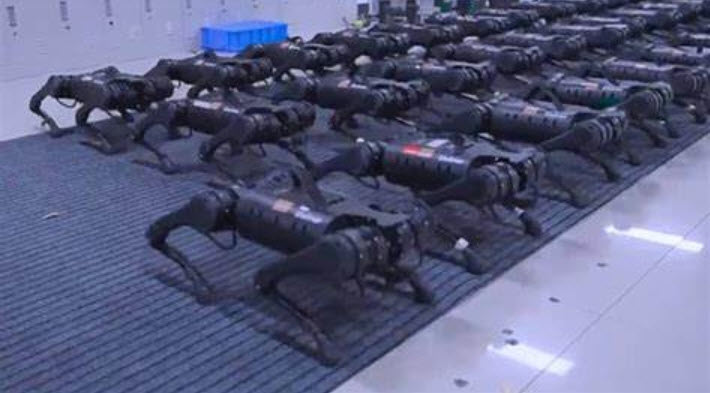
I guess that it is the new “wave of the future”.
And speaking of waves… how about some mechanical sharks. Maybe with death lasers for eyes…

Oh, heck.
Forget about ships. How about entire navy of robot craft…

And finally
Do you want more?
I have more posts in my China Index here…
China.
Articles & Links
Master Index.
You’ll not find any big banners or popups here talking about cookies and privacy notices. There are no ads on this site (aside from the hosting ads – a necessary evil). Functionally and fundamentally, I just don’t make money off of this blog. It is NOT monetized. Finally, I don’t track you because I just don’t care to.
- You can start reading the articles by going HERE.
- You can visit the Index Page HERE to explore by article subject.
- You can also ask the author some questions. You can go HERE to find out how to go about this.
- You can find out more about the author HERE.
- If you have concerns or complaints, you can go HERE.
- If you want to make a donation, you can go HERE.
..
..

